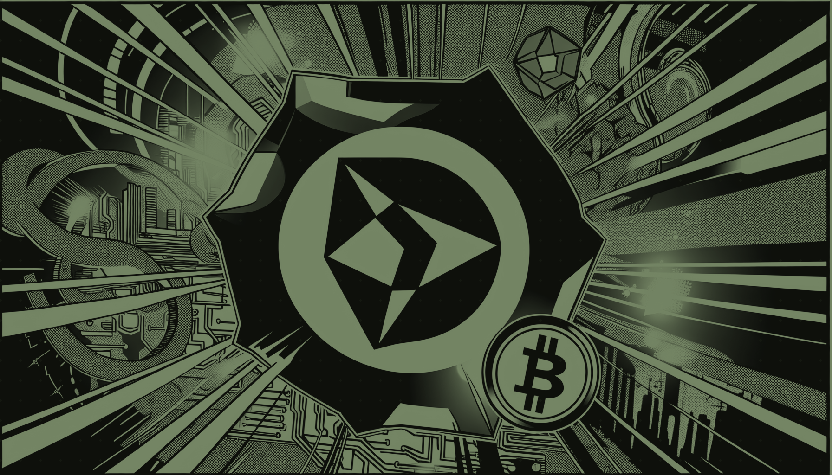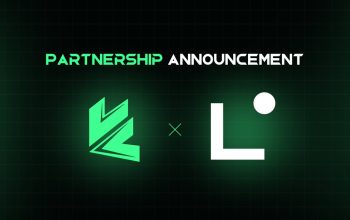Diving Deep into Ethereum: A Comprehensive Exploration
Introduction: The Decentralized Revolution
Imagine a world where financial transactions, digital identities, and even governance operate without intermediaries—transparent, tamper-proof, and accessible to everyone. This is the vision of Ethereum, a decentralized blockchain platform that goes beyond cryptocurrency to enable a new era of decentralized applications (dApps). Unlike Bitcoin, which primarily functions as digital money, Ethereum is a programmable blockchain that allows developers to build and deploy smart contracts—self-executing agreements that automate processes across industries.
From decentralized finance (DeFi) to non-fungible tokens (NFTs) and decentralized autonomous organizations (DAOs), Ethereum has become the backbone of a rapidly expanding digital economy. However, its journey is not without challenges, including scalability, security, and sustainability. As Ethereum evolves with upgrades like Ethereum 2.0 and integrates emerging technologies like artificial intelligence (AI), its potential to reshape industries and empower individuals grows exponentially.
This report explores Ethereum’s core technology, its ecosystem, challenges, and future directions, offering a comprehensive look at one of the most transformative technologies of our time.
—
What is Ethereum, Really?
Ethereum is a decentralized, open-source blockchain platform that enables the creation of smart contracts and dApps [24]. Unlike traditional centralized systems, Ethereum operates on a global network of nodes, ensuring that no single entity controls the platform. This decentralization fosters trust, transparency, and censorship resistance.
Smart Contracts: The Backbone of Ethereum
Smart contracts are self-executing agreements written in code. They automatically enforce the terms of a contract when predefined conditions are met, eliminating the need for intermediaries. For example, a smart contract could automatically release funds once a shipment is confirmed, removing the need for a third-party escrow service.
These contracts are immutable once deployed, meaning they cannot be altered, ensuring fairness and security. However, this also means that any bugs or vulnerabilities in the code can lead to exploits, as seen in high-profile incidents like the DAO hack in 2016 [16].
Ethereum vs. Bitcoin: Beyond Cryptocurrency
While Bitcoin was designed primarily as a decentralized digital currency, Ethereum is a platform for building decentralized applications. Ether (ETH), Ethereum’s native cryptocurrency, is used to pay for transaction fees and computational services on the network. However, Ethereum’s true power lies in its ability to support a vast ecosystem of dApps, making it more akin to a decentralized operating system than just a currency [23].
—
The Ethereum Ecosystem: A Thriving Digital Economy
Ethereum’s ecosystem is diverse and rapidly expanding, encompassing several key areas:
1. Decentralized Finance (DeFi)
DeFi applications replicate traditional financial services—such as lending, borrowing, and trading—in a decentralized manner. Platforms like Uniswap, Aave, and Compound allow users to interact directly with financial protocols without intermediaries, reducing costs and increasing accessibility [21].
2. Non-Fungible Tokens (NFTs)
NFTs are unique digital assets representing ownership of items like artwork, music, and collectibles. Ethereum’s ERC-721 and ERC-1155 standards have enabled the NFT boom, allowing creators to monetize digital content while ensuring provenance and scarcity [11].
3. Decentralized Autonomous Organizations (DAOs)
DAOs are organizations governed by code and community consensus. They enable transparent, democratic decision-making, with members voting on proposals using governance tokens. Examples include MakerDAO and Uniswap’s governance model [26].
4. Gaming and Virtual Worlds
Blockchain-based games like Axie Infinity and Decentraland allow players to own in-game assets as NFTs, creating play-to-earn economies. These games leverage Ethereum’s smart contracts to ensure true ownership and interoperability [22].
—
Challenges: Scalability, Security, and Sustainability
Despite its potential, Ethereum faces significant hurdles:
1. Scalability Issues
Ethereum’s current Proof-of-Work (PoW) consensus mechanism limits transaction throughput, leading to congestion and high gas fees during peak demand [10]. This scalability bottleneck has spurred the development of Layer 2 solutions like Optimistic Rollups and zk-Rollups, which process transactions off-chain before settling them on Ethereum.
2. Security Vulnerabilities
Smart contracts are prone to bugs and exploits. High-profile incidents like the DAO hack and the Poly Network exploit highlight the need for rigorous auditing and security best practices [6]. AI-driven tools are now being used to detect vulnerabilities before they can be exploited [20].
3. Environmental Concerns
Ethereum’s PoW consensus mechanism consumes significant energy, raising sustainability concerns. The transition to Proof-of-Stake (PoS) in Ethereum 2.0 aims to reduce energy consumption by over 99% [17].
—
Ethereum 2.0: The Future of Scalability and Sustainability
Ethereum 2.0, also known as Serenity, is a multi-phase upgrade designed to address scalability, security, and sustainability:
1. Proof-of-Stake (PoS) Consensus
Ethereum is transitioning from PoW to PoS, where validators stake ETH to secure the network. This shift reduces energy consumption and increases transaction throughput [17].
2. Sharding
Sharding divides the blockchain into smaller, parallel chains (shards), allowing the network to process transactions in parallel and significantly increasing scalability [19].
3. Ethereum Improvement Proposals (EIPs)
Ongoing upgrades, such as EIP-1559 (which introduced fee burning) and EIP-4844 (which enables proto-danksharding), aim to improve efficiency and reduce costs [18].
—
The Role of AI in Ethereum’s Future
AI is increasingly being integrated into Ethereum’s ecosystem to enhance security, efficiency, and user experience:
1. Smart Contract Auditing
AI-powered tools analyze smart contract code to detect vulnerabilities before deployment, reducing the risk of exploits [6].
2. Market Analysis and Prediction
AI algorithms analyze blockchain data to provide insights into market trends, helping traders and investors make informed decisions [11].
3. Decentralized Governance
AI can optimize DAO governance by analyzing voting patterns and proposing improvements to decision-making processes [20].
—
Ethereum’s Impact: Beyond the Tech
Ethereum’s influence extends beyond technology, with the potential to transform industries and empower individuals:
1. Financial Inclusion
DeFi platforms provide access to financial services for the unbanked, enabling peer-to-peer lending, borrowing, and trading without traditional intermediaries [21].
2. Transparent Governance
Blockchain-based voting systems can enhance democracy by ensuring secure, tamper-proof elections [26].
3. Creator Economy
NFTs and smart contracts allow artists, musicians, and content creators to monetize their work directly, reducing reliance on centralized platforms [11].
—
Conclusion: The Decentralized Future is Here
Ethereum represents a paradigm shift in how we interact with technology, finance, and governance. While challenges like scalability and security persist, ongoing upgrades and innovations—such as Ethereum 2.0 and AI integration—are paving the way for a more efficient, sustainable, and inclusive digital future.
As Ethereum continues to evolve, its potential to reshape industries, empower individuals, and foster decentralized innovation becomes increasingly evident. The journey toward a decentralized future is underway, and Ethereum is at the forefront of this revolution.
—
Sources




